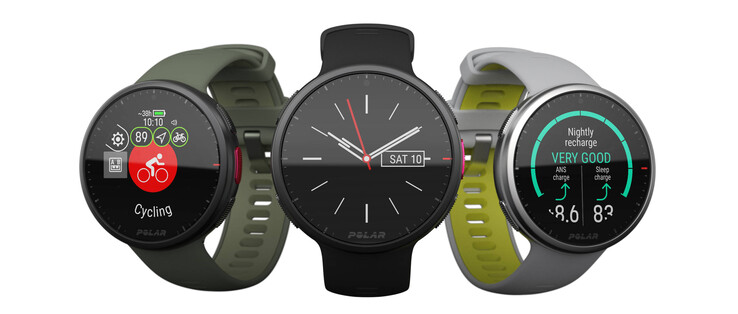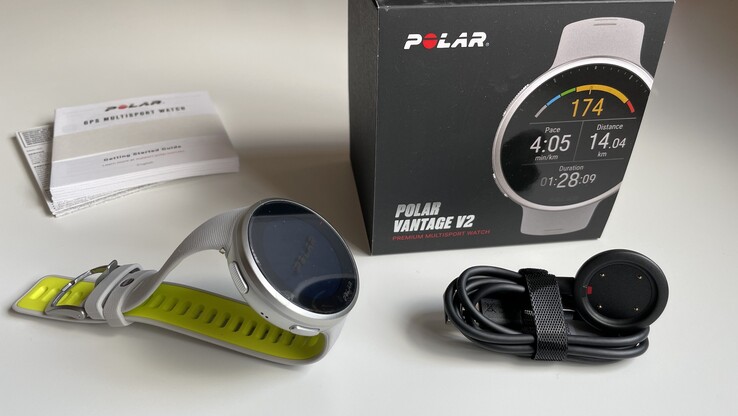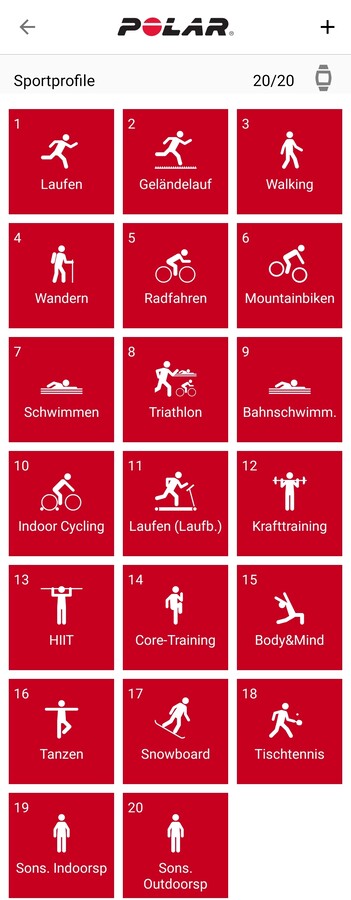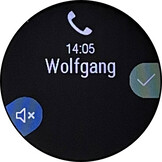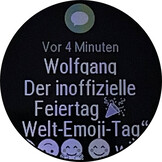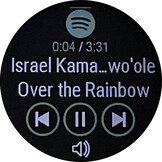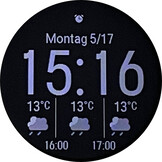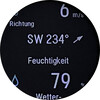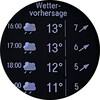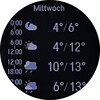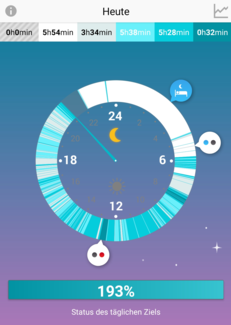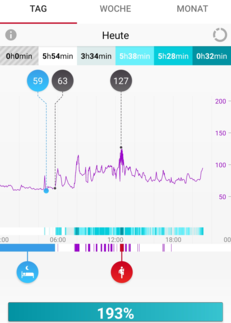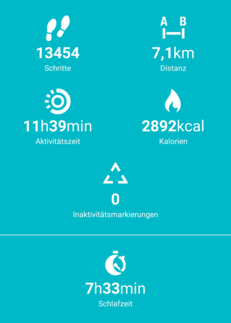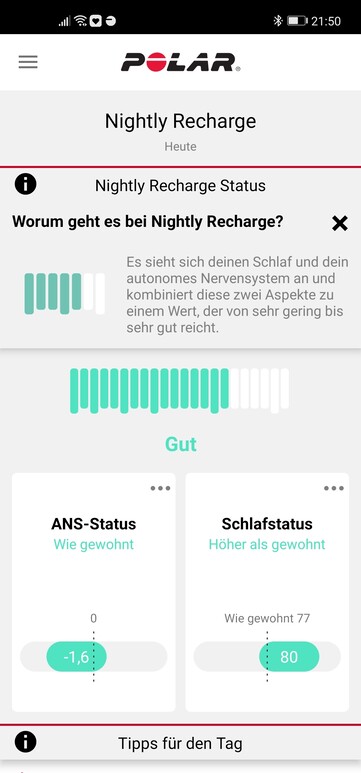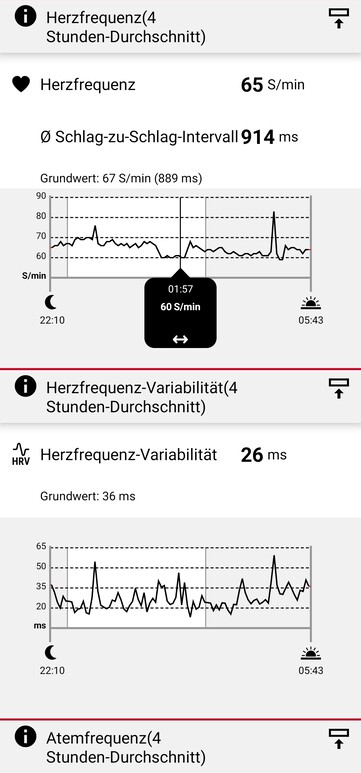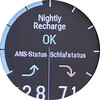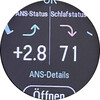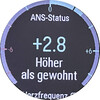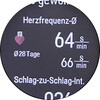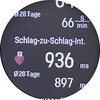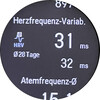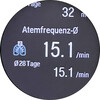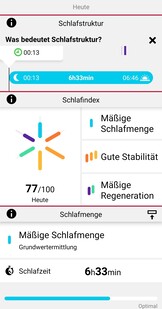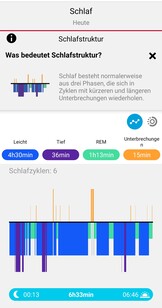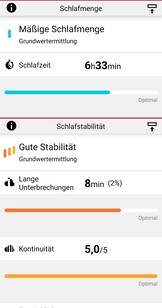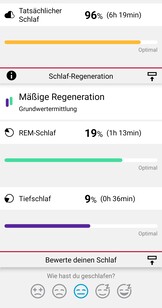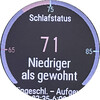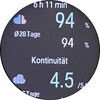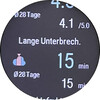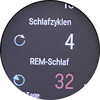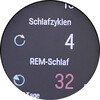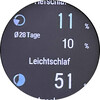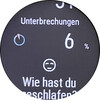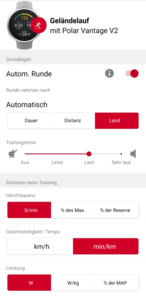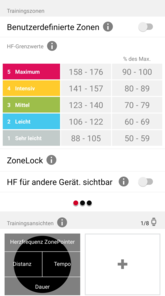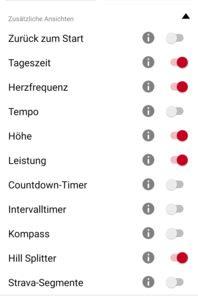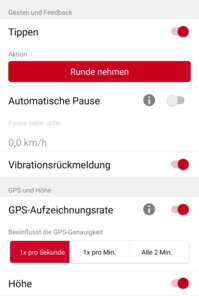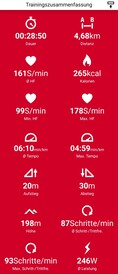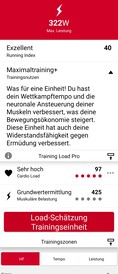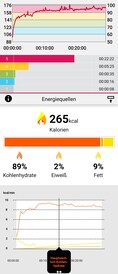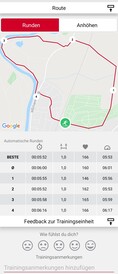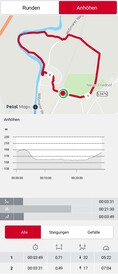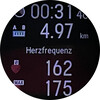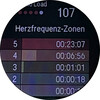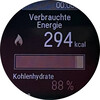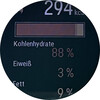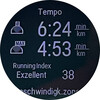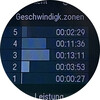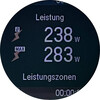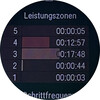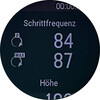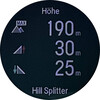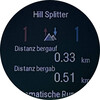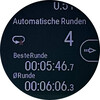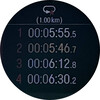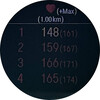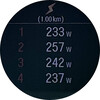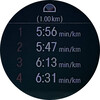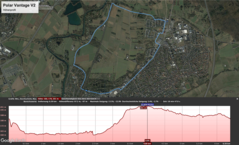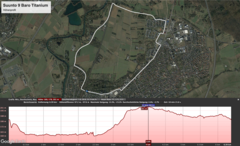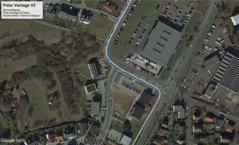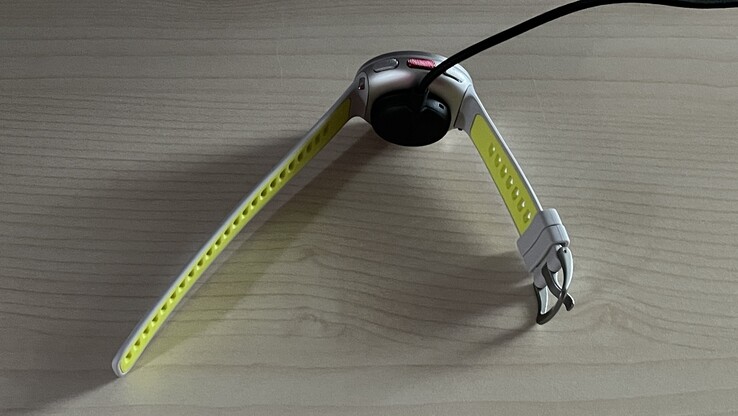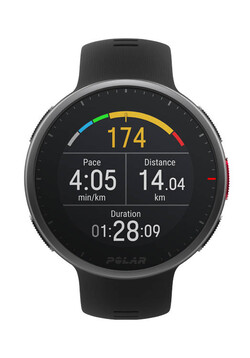Polar Vantage V2 in review: Great sports watch with useful smartwatch functions
Case and equipment - Tested according to military standard
The Polar Vantage V2 follows the Vantage V, which was introduced in fall 2018. We only had a few details about the hardware at the end of testing. If we receive the requested data, we will add the specifications accordingly. Functionally, the Vantage V2 brings, among other things, a remote control for the music app on the smartphone, as well as performance tests for runners and cyclists and a leg recovery test, which we briefly explain in the Health and Fitness section.
The sports watch is military-standard MIL-STD-810G resistant to extreme temperatures, humidity and shock. Polar has increased the resistance in deep water from 50 m to 100 m (~164 to 328 feet) compared to its predecessor. According to the manufacturer, it is ISO 22810 qualified for regular use in water, but not for diving with equipment.
The lightweight aluminum alloy case weighs just 34 grams (~1.2 oz) without the strap, and 52 grams (~1.8 oz) with it. On the test device, a lime-yellow inside of the silicone band stands out, as does the center of the 5 easy-grip buttons, which also has a red accent on the other two color variants. Polar offers alternatives for the 22mm (~0.87 in) band with quick release; however, the ergonomically designed band connector is not compatible with standard 22mm bands.
Polar protects the 1.2-inch display with laminated Gorilla glass with an anti-fingerprint coating. The transflective LCD is easy to read outdoors and in bright indoor environments, even without backlighting. The brightness of the active illumination regulates itself independently via a light sensor. It stays on permanently during exercise if desired, otherwise it activates when you raise your arm, except in do-not-disturb mode.
The Vantage V2 connects to two of each of the four navigation satellite systems GPS, GLONASS, Galileo and QZSS and has a barometric sensor that allows it to take inclines and declines into account when calculating speed, among other things. It can also be paired with running and cycling sensors as well as with a chest strap.
Setup and operation - touch screen operation possible
After charging, it is not necessary to connect the Polar Vantage V2 to a smartphone, you can use it autonomously. In this case, it stores some personal data locally for its analyses and asks for the training intensity as well as the usual nightly rest time.
However, updates, additional sports programs and detailed analyses can only be obtained by setting it up via an Android or iOS smartphone and the Polar Flow app, or alternatively via a Mac or Windows PC and the FlowSync application.
The touchscreen and five buttons are available for operation, which react differently depending on the length of pressure. For example, the upper key activates the display illumination and locks both the touchscreen and the keys against accidental touches after a long press. The lower left button starts the synchronization with the smartphone, opens the function menu or takes a step back. A long press on the center right button opens the training app in the last used training mode. Otherwise, the right buttons are used for scrolling and selecting in the overviews and lists.
Similar to the widgets known from other wearables, Polar fills the watch face with different information that you can switch between. You can choose between Polar's own analyses, such as FitSpark, Cardio Load Status or Nightly Recharge - more details in the Health and Fitness section - or information about weather and heart rate. You can deactivate individual widgets, but not change their order.
If you open the corresponding detail page, the weather widget, for example, provides a preview of the next hours and, in increasing intervals, the next two days. The screens below only show an excerpt.
Away from the health and fitness features, the few tools include remote-control for the currently active music app on the smartphone, timer and stopwatch, and an alarm clock with only one configurable alarm.
For the time display itself, there are only a few digital and analog variants to choose from, for which you also choose between one of 7 colors. Therefore, the smartwatch's appearance changes mainly in interaction with the widget information.
Telephony and notifications
When you receive an incoming call, you can mute the smartwatch, but not the smartphone. However, you can reject the call and also accept it to make a call via the smartphone afterwards.
You can initiate a callback or send a message from the missed call notification. The option also offers itself as a response to a Telegram or WhatsApp message, but only opens the messaging app on the smartphone.
While the music control takes over the icon of the music app on the smartphone, the plain message icon does not reveal whether the message is from Telegram or WhatsApp, for example. It displays emojis for the most part, but only in monochrome.
Health and fitness - Polar analyzes nocturnal rest
On the iPhone, Polar Flow connects to Apple Health. On Android only the Polar Beat app connects to Google Fit, the Polar Flow app does not. On both platforms you can connect your Polar account with Strava, Komoot, TrainingPeaks, MyFitnessPal and Nike+ and on the iPhone you can also use the calendar with the training plan.
Activity and health monitoring
While other fitness trackers precisely compare a standing target as well as the targeted steps and active minutes, Polar is a bit more abstract in determining a level that you should reach or maintain with sufficient exercise. At the end of the day, Polar precisely shows how many minutes you have spent active, with moderate activities, mostly passive or resting. Polar does not calculate the number of floors climbed as an additional indicator of physical activity during the day, nor does it draw a dedicated stress chart like other manufacturers do based on heart rate variability.
Sleep recording and nightly recovery
If you open the nightly recovery details on the Vantage V2, Polar differentiates between ANS and sleep status.
The ANS status expresses how well the autonomic nervous system (ANS) has rested overnight, which can be influenced by factors such as stress, late evening exercise, illness or alcohol consumption. The analysis is based on the heart rate, respiratory rate and heart rate variability of the first hours after falling asleep and compares each with the previous nights.
Under the name Sleep Plus Stages, Polar logs the duration and depth of sleep. The evaluation of sleep quality includes the personal records recorded so far as well as a general comparison.
Heart rate, heart rhythm and blood oxygen saturation
The Polar Vantage V2 does not measure oxygen saturation, which is increasingly being measured even in inexpensive wearables.
We compare the optical PPG sensor with the recording of a Polar chest strap with a heart rate sensor during interval training. In order to be able to observe the measurement along with a rising heart rate, 2 minutes of light core exercises follow 1 intensive minute in each of 3 runs between warm-up and cool-down.
After the Vantage V2 initially runs out of control with up to 30 beats apart, it increasingly adjusts better. At the peak, it stays between 3 and 7 beats below the frequency measured by the chest strap near the heart. That the Vantage V2 ultimately does a comparatively good job becomes apparent when you look at the diagram of the Polar Vantage M2.
Training
In addition, there are self-created training favorites that you set up beforehand via Polar Flow, either in the app or via the web portal. You can either set a duration, distance or the targeted calorie consumption as a quick goal or define an interval training.
A simple interval timer can also be set in the watch's settings, as well as a race pace by entering the target time in addition to the distance. Those with a Strava Summit account can also transfer Strava Live segments to the Vantage V2 to compete with other Strava users on selected course segments.
When running or cycling outdoors, the Hill Splitter feature automatically separates flat stretches from sections with inclines or declines. The running log included here shows the lap times determined by distance and the pace determined for the flat, uphill and downhill sections (last screen).
Active athletes should also log in to flow.polar.com with their account. There, in addition to a detailed dashboard with diagrams, they will find, among other things, better options for configuring the training pages and for creating personalized training programs.
With the Vantage V2, Polar adds 3 performance tests and an advanced analysis Training-Load-Pro to its cardio load analysis and training program FitSpark. In the following, we briefly describe what it's all about.
Cardio Load, Training Load Pro
The Cardio Load status evaluates the effect on the cardiovascular system after each workout. It is present on many Polar watches and can also be activated as a widget. It signals with reference to the last training whether the cardio load status is understraining, maintaining, building up or overstraining.
The Training Load Pro function links the muscular load during training with the personal perceived load, which can be specified for each workout, and the load of the training for the cardiovascular system (Cardio Load).
FitSpark
The FitSpark widget provides access to personalized workout suggestions, including supportive exercises and guided workouts in the areas of strength and cardio. The suggestions are based on the analyzed fitness level.
Leg recovery test
The leg recovery test analyzes the resilience of the leg muscles in a few minutes using three counter-movement jumps with short breaks in between. It is recommended if you are unsure whether you can expect your legs to do another workout following one or more hard training sessions.
Running performance test
The running performance test determines the respective maximum aerobic power and aerobic speed, maximum heart rate and maximum oxygen uptake (VO2max) in about 40 minutes. It is designed to help runners keep track of changes in their running performance in order to plan their training wisely.
Wheel performance test
For the cycling performance test, a functional threshold power test (FTP test), you have to connect the Vantage V2 with a cycling power meter. The bike performance test is also used to detect changes in one's own performance in order to adjust one's training plan accordingly.
GPS and navigation
For navigation, the tracker connects in pairs with GPS and GLONASS, GPS and Galileo, or GPS and QZSS. Our practical test with a bicycle certifies that the Vantage V2 has almost the same precision as the Suunto 9 Baro Titanium distinguishes. The tracks largely overlap in the overall course. In the few deviations, the Suunto 9 Baro still matched the actual track a bit better in each case.
If you connect your Polar account with Komoot, Polar can transfer selected routes to the smartwatch. They are then available in connection with a GPS-supported activity.
To save the battery, the interval for GPS recording can be extended from every second to every 1 or 2 minutes or deactivated.
Battery life
The manufacturer states a runtime of about 7 days for normal use. In our practical test with sleep tracking, the battery capacity dropped by 15-20% per day depending on use, which amounts to a runtime of 5-6 days. Users who frequently do sports and activate the GPS will have to charge it more often; however, the mixed calculation is difficult because hardly any sensor puts more strain on the battery of a smartwatch than GPS.
According to Polar, the 346 mAh battery lasts up to 40 hours in permanent GPS mode, and up to 100 hours when the other consumers are partially reduced.
When charging, the battery reaches about 50% of its capacity after half an hour. The test device took 75 minutes to fully charge.
Pros
Cons
Verdict
The sensors of the Polar watch were convincing in the test. This is not only true for the GPS and the barometer, which Polar uses for the informative speed splitting; the optical sensor also held its own against the naturally more precise heart rate measurement.
However, it is incomprehensible that Polar does not pay attention to the SpO2 value. Whenever someone has doubts about their health, the saturation quickly and easily helps as an indicator.
Quick settings or typical smartwatch features like mobile payment and a store for alternative watch faces are also not found on Polar; however, these are often less important to athletes than easy-to-grip buttons and a display that can be easily read outdoors - both of which the Vantage V2 offers.
The Polar software is an important part of the overall package.
Just under 500 Euros (~$611) is a lot of money, even for a sports watch. The expense is worth it if you not only do a lot of sports, but also aim to improve and can use the performance analyses and planning functions for this. You can also find some of this in the cheaper Polar Vantage M2. On the other hand, if you are looking for a high-quality tracker that allows you to listen to music on the go without a smartphone, you will find it in the Garmin Forerunner 745 is an alternative. Specific functions for off-road training are offered by the Garmin Enduro.
Price and availability
The Polar Vantage V2 is available in three color combinations (case/band): black/black, black/green and silver/grey/lime. The RRP is 499.95 Euros (~$611). You can get them a bit cheaper in stores, for example at Amazon for $499.95.




